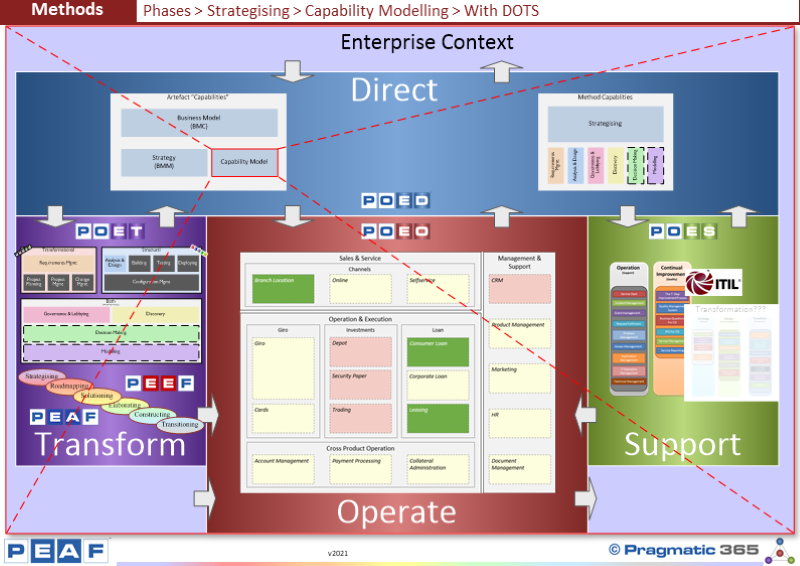
The Sales & Service, Operation & Execution, Cross
Product Operation, and Management & Support boxes show a typical example
Capability Model. Obviously, the actual Capabilities are different depending
upon the actual Enterprise.
Operate
However, this example, like most Capability models, only
considers Capabilities associated with the Operate Capability of the
Enterprise, and completely or partially misses three other strategically
important Capabilities.
...to read more, please Login or Register